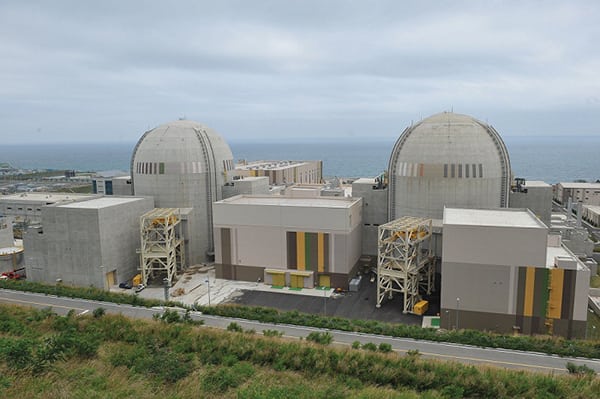Two Years Later, S. Korea Finally Puts Shin-Wolsong 2 Online
In South Korea, the second unit at Korea Hydro and Nuclear Power’s (KHNP’s) Shin-Wolsong reactor (Figure 3) was finally connected to the grid in late February.
 |
| 3. Finally connected. Korea Hydro and Nuclear Power’s Shin-Wolsong 2 was grid-connected in late February, nearly two years after it was completed. Courtesy: KHNP |
Though the reactor was completed in 2013, the country’s Nuclear Safety and Security Commission (NSSC) withheld its approval to allow it to begin operations after a documentation scandal rocked the country’s nuclear sector.
The scandal broke after KHNP—the subsidiary of Korea Electric Power Co. (KEPCO) that operates the nation’s 24 nuclear reactors—admitted that eight unnamed suppliers had faked 60 certificates covering 7,682 nuclear power components over a period of nearly 10 years, from 2003 to 2012. That prompted the Energy Ministry to order the immediate shutdown of several affected reactors and jeopardized the country’s power reliability.
Construction on the two-unit Shin-Wolsong plant began in 2007 for Unit 1 and 2008 for Unit 2. Unit 1, a domestically designed OPR-1000, started up in January 2012 but was among the reactors shut down to enable replacement of cabling after the documentation scandal in May 2013. The reactor was cleared to restart in January 2014.
KHNP noted that Unit 2 successfully achieved grid synchronization and system connection only 104 days after the NSSC issued an operating license. Commercial operation of the reactor is expected in July 2015.
At least four other reactors are under construction in South Korea, including the nation’s first third-generation APR1400 reactors at Shin-Kori 3 and 4. Both were scheduled to begin commercial operation in late 2014, but their start date has been delayed to early 2015 for recabling.
Meanwhile, per the country’s January 2014 Energy Master Plan, South Korea wants to get 29% of its electricity from nuclear by 2035, compared to the current 25%. As some analysts note, that will require building 7 GW of new capacity beyond the 8.6 GW already planned. The government’s seventh basic long-term power plan due to be released in April 2015 will offer more insight into its future energy plans.
—Sonal Patel, associate editor